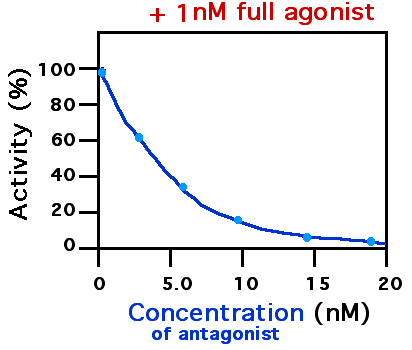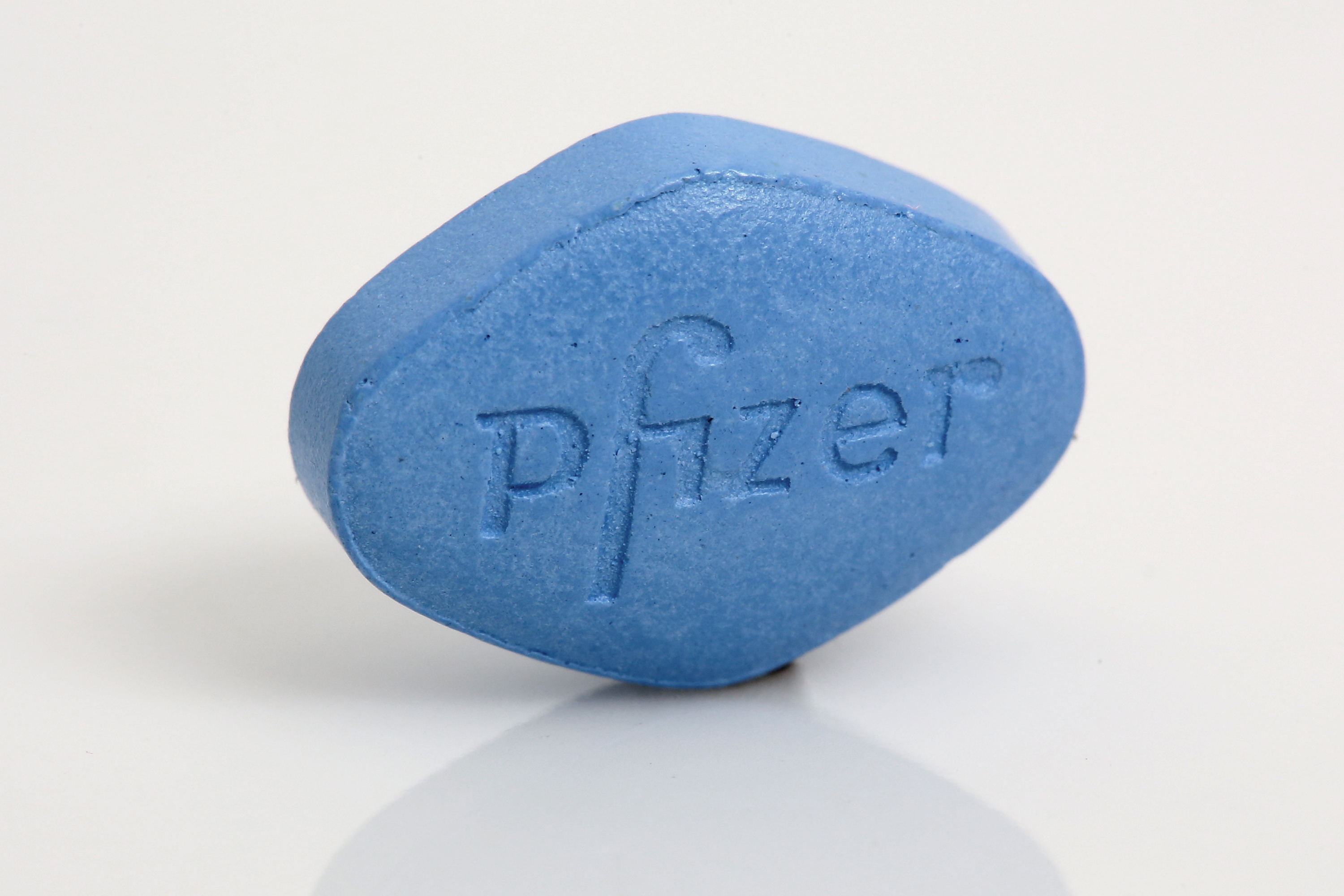|
PRX-08066
PRX-08066 is a drug discovered and developed by Predix (later Epix) Pharmaceuticals ale S. Dhanoa et al. Patent US 7,030,240 B2 which acts as a potent and selective antagonist at the serotonin 5-HT2B receptor, with a 5-HT2B binding affinity (Ki) of 3.4nM, and high selectivity over the closely related 5-HT2A and 5-HT2C receptors and other receptor targets. PRX-08066 and other selective 5-HT2B antagonists are being researched for the treatment of pulmonary arterial hypertension, following the discovery that the potent 5-HT2B agonist norfenfluramine produces pulmonary arterial hypertension and subsequent heart valve damage. In animal studies, PRX-08066 has been found to reduce several key indicators of pulmonary arterial hypertension and improved cardiac output, with similar efficacy to established drugs for this condition such as bosentan, sildenafil, beraprost and iloprost Iloprost is a medication used to treat pulmonary arterial hypertension (PAH), scleroderma, Raynau ... [...More Info...] [...Related Items...] OR: [Wikipedia] [Google] [Baidu] |
5-HT2B Receptor
5-Hydroxytryptamine receptor 2B (5-HT2B) also known as serotonin receptor 2B is a protein that in humans is encoded by the ''HTR2B'' gene. 5-HT2B is a member of the 5-HT2 receptor family that binds the neurotransmitter serotonin (5-hydroxytryptamine, 5-HT). Tissue distribution and function First discovered in the stomach of rats, 5-HT2B was challenging to characterize initially because of its structural similarity to the other 5-HT2 receptors, particularly 5-HT2C. The 5-HT2 receptors (of which the 5-HT2B receptor is a subtype) mediate many of the central and peripheral physiologic functions of serotonin. Cardiovascular effects include contraction of blood vessels and shape changes in platelets; central nervous system (CNS) effects include neuronal sensitization to tactile stimuli and mediation of some of the effects of hallucinogenic substituted amphetamines. The 5-HT2B receptor is expressed in several areas of the CNS, including the dorsal hypothalamus, frontal cortex, med ... [...More Info...] [...Related Items...] OR: [Wikipedia] [Google] [Baidu] |
Antagonist (pharmacology)
A receptor antagonist is a type of receptor ligand or drug that blocks or dampens a biological response by binding to and blocking a receptor rather than activating it like an agonist. Antagonist drugs interfere in the natural operation of receptor proteins.Pharmacology Guide: In vitro pharmacology: concentration-response curves " '' GlaxoWellcome.'' Retrieved on December 6, 2007. They are sometimes called blockers; examples include alpha blockers, |
Serotonin
Serotonin () or 5-hydroxytryptamine (5-HT) is a monoamine neurotransmitter. Its biological function is complex and multifaceted, modulating mood, cognition, reward, learning, memory, and numerous physiological processes such as vomiting and vasoconstriction. Approximately 90% of the serotonin that the body produces is in the intestinal tract. Biochemically, the indoleamine molecule derives from the amino acid tryptophan, via the (rate-limiting) Tryptophan hydroxylase, hydroxylation of the 5 position on the ring (forming the intermediate 5-Hydroxytryptophan, 5-hydroxytryptophan), and then Aromatic L-amino acid decarboxylase, decarboxylation to produce serotonin. Serotonin is primarily found in the enteric nervous system located in the human gastrointestinal tract, gastrointestinal tract (GI tract). However, it is also produced in the central nervous system (CNS), specifically in the raphe nuclei located in the brainstem, Merkel cells located in the skin, Neuroendocrine cell#Pulmo ... [...More Info...] [...Related Items...] OR: [Wikipedia] [Google] [Baidu] |
Receptor (biochemistry)
In biochemistry and pharmacology, receptors are chemical structures, composed of protein, that receive and transduce signals that may be integrated into biological systems. These signals are typically chemical messengers which bind to a receptor and cause some form of cellular/tissue response, e.g. a change in the electrical activity of a cell. There are three main ways the action of the receptor can be classified: relay of signal, amplification, or integration. Relaying sends the signal onward, amplification increases the effect of a single ligand, and integration allows the signal to be incorporated into another biochemical pathway. Receptor proteins can be classified by their location. Transmembrane receptors include ligand-gated ion channels, G protein-coupled receptors, and enzyme-linked hormone receptors. Intracellular receptors are those found inside the cell, and include cytoplasmic receptors and nuclear receptors. A molecule that binds to a receptor is called a li ... [...More Info...] [...Related Items...] OR: [Wikipedia] [Google] [Baidu] |
Dissociation Constant
In chemistry, biochemistry, and pharmacology, a dissociation constant (K_D) is a specific type of equilibrium constant that measures the propensity of a larger object to separate (dissociate) reversibly into smaller components, as when a complex falls apart into its component molecules, or when a salt splits up into its component ions. The dissociation constant is the inverse of the association constant. In the special case of salts, the dissociation constant can also be called an ionization constant. For a general reaction: : A_\mathit B_\mathit \mathit A + \mathit B in which a complex \ce_x \ce_y breaks down into ''x'' A subunits and ''y'' B subunits, the dissociation constant is defined as : K_D = \frac where and ''x'' B''y''are the equilibrium concentrations of A, B, and the complex A''x'' B''y'', respectively. One reason for the popularity of the dissociation constant in biochemistry and pharmacology is that in the frequently en ... [...More Info...] [...Related Items...] OR: [Wikipedia] [Google] [Baidu] |
5-HT2A Receptor
The 5-HT2A receptor is a subtype of the 5-HT2 receptor that belongs to the serotonin receptor family and is a G protein-coupled receptor (GPCR). The 5-HT2A receptor is a cell surface receptor, but has several intracellular locations. 5-HT is short for 5-hydroxy-tryptamine or serotonin. This is the main excitatory receptor subtype among the GPCRs for serotonin, although 5-HT2A may also have an inhibitory effect on certain areas such as the visual cortex and the orbitofrontal cortex. This receptor was first noted for its importance as a target of serotonergic psychedelic drugs such as LSD and psilocybin mushrooms. Later it came back to prominence because it was also found to be mediating, at least partly, the action of many antipsychotic drugs, especially the atypical ones. Downregulation of post-synaptic 5-HT2A receptor is an adaptive process provoked by chronic administration of selective serotonin reuptake inhibitors (SSRIs) and atypical antipsychotics. Suicidal and ... [...More Info...] [...Related Items...] OR: [Wikipedia] [Google] [Baidu] |
5-HT2C Receptor
The 5-HT2C receptor is a subtype of 5-HT receptor that binds the endogenous neurotransmitter serotonin (5-hydroxytryptamine, 5-HT). It is a G protein-coupled receptor (GPCR) that is coupled to Gq/G11 and mediates excitatory neurotransmission. ''HTR2C'' denotes the human gene encoding for the receptor, that in humans is located at the X chromosome. As males have one copy of the gene and in females one of the two copies of the gene is repressed, polymorphisms at this receptor can affect the two sexes to differing extent. Structure At the cell surface the receptor exists as a homodimer. The crystal structure is known since 2018. Distribution 5-HT2C receptors are located mainly in the choroid plexus, and in rats is also found in many other brain regions in high concentrations, including parts of the hippocampus, anterior olfactory nucleus, substantia nigra, several brainstem nuclei, amygdala, subthalamic nucleus and lateral habenula. 5-HT2C receptors are also found on epit ... [...More Info...] [...Related Items...] OR: [Wikipedia] [Google] [Baidu] |
Norfenfluramine
Norfenfluramine, or 3-trifluoromethylamphetamine, is a never-marketed drug of the amphetamine family that behaves as a serotonin and norepinephrine releasing agent and potent 5-HT2A, 5-HT2B, and 5-HT2C agonist. The action of norfenfluramine on 5-HT2B receptors on heart valves leads to a characteristic pattern of heart failure following proliferation of cardiac fibroblasts on the tricuspid valve, known as cardiac fibrosis. This side effect led to the withdrawal of fenfluramine as an anorectic agent worldwide, and to the withdrawal of benfluorex in Europe, as both fenfluramine and benfluorex form norfenfluramine as an active metabolite. It is a human TAAR1 agonist. See also * Fenfluramine * Benfluorex Benfluorex, sold under the brand name Mediator, is an anorectic and hypolipidemic agent that is structurally related to fenfluramine (a substituted amphetamine). It may improve glycemic control and decrease insulin resistance in people with poorl ... * Norfenfluramine is the pr ... [...More Info...] [...Related Items...] OR: [Wikipedia] [Google] [Baidu] |
Bosentan
Bosentan, sold under the brand name Tracleer and Safebo among others, is a dual endothelin receptor antagonist medication used in the treatment of pulmonary artery hypertension (PAH). Bosentan is available as film-coated tablets (62.5 mg or 125 mg) or as dispersable tablets for oral suspension (32 mg). Medical uses Bosentan is used to treat people with moderate pulmonary arterial hypertension and to reduce the number of digital ulcers — open wounds on especially on fingertips and less commonly the knuckles — in people with systemic scleroderma. Bosentan causes harm to fetuses and pregnant women must not take it, and women must not become pregnant while taking it (Pregnancy Category X). It may render hormonal contraceptives ineffective so other forms of birth control must be used. In the US it is only available from doctors who follow an FDA-mandated risk evaluation and mitigation strategy (REMS) with respect to risks to fetuses and its risks of causing l ... [...More Info...] [...Related Items...] OR: [Wikipedia] [Google] [Baidu] |
Sildenafil
Sildenafil, sold under the brand name Viagra, among others, is a medication used to treat erectile dysfunction and pulmonary arterial hypertension. It is unclear if it is effective for treating sexual dysfunction in women. It is taken by mouth or by injection into a vein. Onset is typically within twenty minutes and lasts for about two hours. Common side effects include headaches, heartburn, and flushed skin. Caution is advised in those with cardiovascular disease. Rare but serious side effects include a prolonged erection (priapism) that can lead to damage to the penis, vision problems, and hearing loss. Sildenafil should not be taken by people on nitrates such as nitroglycerin (glycerin trinitrate), as this may result in a serious drop in blood pressure. Sildenafil should not be taken within four hours of taking an alpha blocker. Sildenafil acts by blocking phosphodiesterase 5 (PDE5), an enzyme that promotes breakdown of cGMP, which regulates blood flow in the penis. ... [...More Info...] [...Related Items...] OR: [Wikipedia] [Google] [Baidu] |
Beraprost
Beraprost is a pharmaceutical drug used in several Asian countries, including Japan and South Korea, as a vasodilator and antiplatelet agent. It is classified as a prostacyclin analog. It has been studied for the treatment of pulmonary hypertension and for use in avoiding reperfusion injury. Clinical pharmacology As an analog of prostacyclin PGI2, beraprost affects vasodilation, which in turn lowers blood pressure. Beraprost also inhibits platelet Platelets, also called thrombocytes (from Greek θρόμβος, "clot" and κύτος, "cell"), are a component of blood whose function (along with the coagulation factors) is to react to bleeding from blood vessel injury by clumping, thereby ini ... aggregation, though the role this phenomenon may play in relation to pulmonary hypertension has yet to be determined. Dosage and administration Beraprost is administered orally as a pill available in strength of 20 mcg. Dose ranges from 60 to 180 mcg in divided doses after meals. Re ... [...More Info...] [...Related Items...] OR: [Wikipedia] [Google] [Baidu] |


